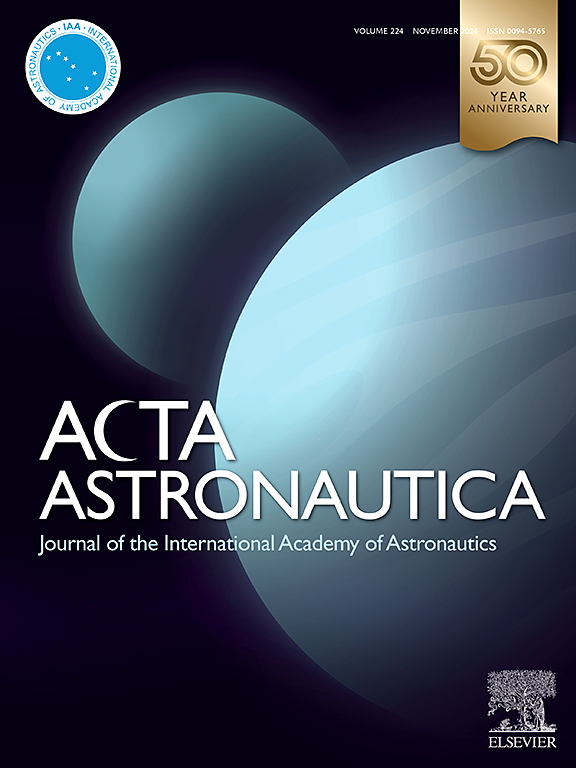The basic data processing for KPLO gamma-ray spectrometer (KGRS)
IF 3.1
2区 物理与天体物理
Q1 ENGINEERING, AEROSPACE
引用次数: 0
Abstract
On August 5, 2022, South Korea's first lunar probe, the Korea Pathfinder Lunar Orbiter (KPLO, DANURI) was launched and entered lunar orbit in December of the same year. The KPLO is currently conducting a mission with the KPLO Gamma-Ray Spectrometer (KGRS) developed by the Korea Institute of Geoscience and Mineral Resources (KIGAM). The primary objective of the KGRS is to collect gamma-ray spectral information on the lunar surface and create an elemental map. This paper discusses the basic processing steps of the KGRS data currently operating in lunar orbit and the data processing results for approximately one year. KGRS data is currently maintained in two categories: TM2 data, and TM3 data. We are also preparing the calibration (CAL) data. In the TM2 data stage, time conversion and correction are performed. In the TM3 data stage, the SPICE (Spacecraft Planet Instrument C-matrix Events) system is used to obtain satellite positional information. All KGRS data being transmitted to the KIGAM is monitored daily. The monitoring program displays and monitors the engineering data such as device temperature and science data such as gamma-ray counts. Monitoring gamma-ray counts allows us to detect events such as solar flares or gamma-ray bursts that could affect the data. Since that kind of data can not represent information on the lunar surface, the data at that time should be excluded from mapping data. To verify the result of the data selection, we compare the gamma-ray count maps before and after the exclusion of these data.
求助全文
约1分钟内获得全文
求助全文
来源期刊

Acta Astronautica
工程技术-工程:宇航
CiteScore
7.20
自引率
22.90%
发文量
599
审稿时长
53 days
期刊介绍:
Acta Astronautica is sponsored by the International Academy of Astronautics. Content is based on original contributions in all fields of basic, engineering, life and social space sciences and of space technology related to:
The peaceful scientific exploration of space,
Its exploitation for human welfare and progress,
Conception, design, development and operation of space-borne and Earth-based systems,
In addition to regular issues, the journal publishes selected proceedings of the annual International Astronautical Congress (IAC), transactions of the IAA and special issues on topics of current interest, such as microgravity, space station technology, geostationary orbits, and space economics. Other subject areas include satellite technology, space transportation and communications, space energy, power and propulsion, astrodynamics, extraterrestrial intelligence and Earth observations.
 求助内容:
求助内容: 应助结果提醒方式:
应助结果提醒方式:


